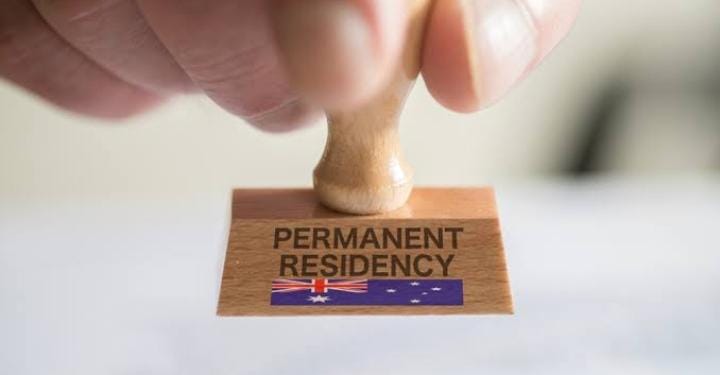How to Extend Permanent Residency in Australia is a crucial process for anyone wishing to maintain their rights to live, work, and study in the country after their initial travel facility expires. While permanent residency itself doesn’t expire, the travel rights associated with it usually do after five years. To maintain these rights, you must apply for a Resident Return Visa (RRV). This guide walks you through the steps, eligibility, and documents needed to extend your permanent residency successfully.
Extending your Permanent Residency (PR) in Australia is essential if you wish to continue enjoying the benefits of living, working, and studying in the country after your initial travel facility expires. While permanent residency itself does not expire, the travel facility attached to the visa typically lasts for five years.
How To Extend Permanent Residency in Australia
To renew this travel facility or maintain your PR status while travelling overseas, you must apply for a Resident Return Visa (RRV). In this guide, we’ll walk you through the key steps, explain the eligibility requirements, and outline what you need to prepare to successfully extend your permanent residency in Australia.
What is Permanent Residency in Australia?
Permanent Residency (PR) in Australia allows non-citizens to live, work, and study indefinitely in the country. It also grants access to government benefits such as Medicare and provides a pathway to Australian citizenship.
PR is usually granted via visas like the Skilled Independent Visa (subclass 189), Partner Visa (subclass 820/801 or 309/100), and others. However, permanent residency status itself does not expire, but your Resident Return Visa (RRV), which allows you to leave and re-enter Australia while maintaining your PR rights, does expire.
Why Do You Need to Extend Permanent Residency?
While your PR status is permanent, your ability to travel in and out of Australia as a permanent resident depends on your Resident Return Visa (RRV). Most PR holders receive an initial RRV valid for 5 years, which permits multiple entries into Australia during that time.
If your RRV expires and you leave Australia, you may not be allowed to re-enter as a permanent resident. Therefore, extending or renewing your RRV is essential if you plan to travel overseas or your current visa is about to expire.
How to Extend or Renew Your Resident Return Visa (RRV)
Let’s explore the key steps and requirements involved in extending your permanent residency in Australia.
Understanding how to extend permanent residency in Australia ensures you won’t lose your right to return if you travel abroad after your RRV expires.
Step 1: Check Your Eligibility
You are eligible to apply for an RRV if:
- You are a current permanent resident or former Australian citizen.
- You have lived in Australia for at least 2 years in the last 5 years as a permanent resident.
- If you do not meet the residence requirement, you may still qualify by demonstrating substantial ties to Australia (such as employment, business, family, or community connections).
Step 2: Prepare Your Documents
You will typically need:
- Your current passport.
- Proof of your permanent residency status.
- Evidence of your residence in Australia during the qualifying period.
- Documentation showing your substantial ties to Australia if applicable.
Step 3: Submit Your Application Online
You can apply for an RRV online through the Australian Department of Home Affairs website. The application fee varies, so check the current fees before submitting.
Step 4: Wait for Processing
Processing times can range from a few days to several weeks. Applying well before your current RRV expires is crucial to avoid travel complications.
Also, read>>How a Migration Agent Bankstown Can Simplify Your Visa Process
Step 5: Receive Your New RRV
Once approved, your new RRV will be linked to your passport electronically. You may need to travel with the passport used for the application.
What if You Cannot meet the Residence Requirements?
The most important thing to know about how to extend permanent residency in Australia is that you’ll need a valid Resident Return Visa to preserve your re-entry rights.
If you have not lived in Australia for the required 2 out of 5 years, you can still apply for an RRV by demonstrating substantial ties to Australia, which could include:
- Employment in Australia or for an Australian organisation.
- Business ownership or investments.
- Close family ties with Australian citizens or PR holders.
- Community involvement and other social connections.
If your visa application is refused, you may need to explore other visa options or seek legal advice.
Can You Extend Permanent Residency Beyond 5 Years?
The RRV allows travel rights for usually 5 years. If you want a longer validity, you need to maintain your residence and ties to Australia. The Department of Home Affairs may grant longer RRVs based on your circumstances.
Permanent Residency itself does not expire, but travel rights do, which is why maintaining your RRV is essential.
Also, read>>Why You Need a Trusted Migration Agent in Bankstown
Conclusion
Extending your permanent residency status in Australia mainly revolves around renewing your Resident Return Visa (RRV), which allows you to re-enter Australia as a permanent resident. Understanding eligibility criteria, preparing the right documents, and applying on time will help you maintain your PR status smoothly.
If you have lived in Australia long-term and have strong ties to the country, renewing your RRV is usually a straightforward process. For those who don’t meet residence requirements, demonstrating substantial ties becomes crucial.
If you are uncertain or facing complications, consider seeking professional advice to secure your permanent residency rights and enjoy your life in Australia without interruptions.
If you’re unsure how to extend permanent residency in Australia or face unique complications, seeking help from a migration agent can simplify the process.


Post a Comment